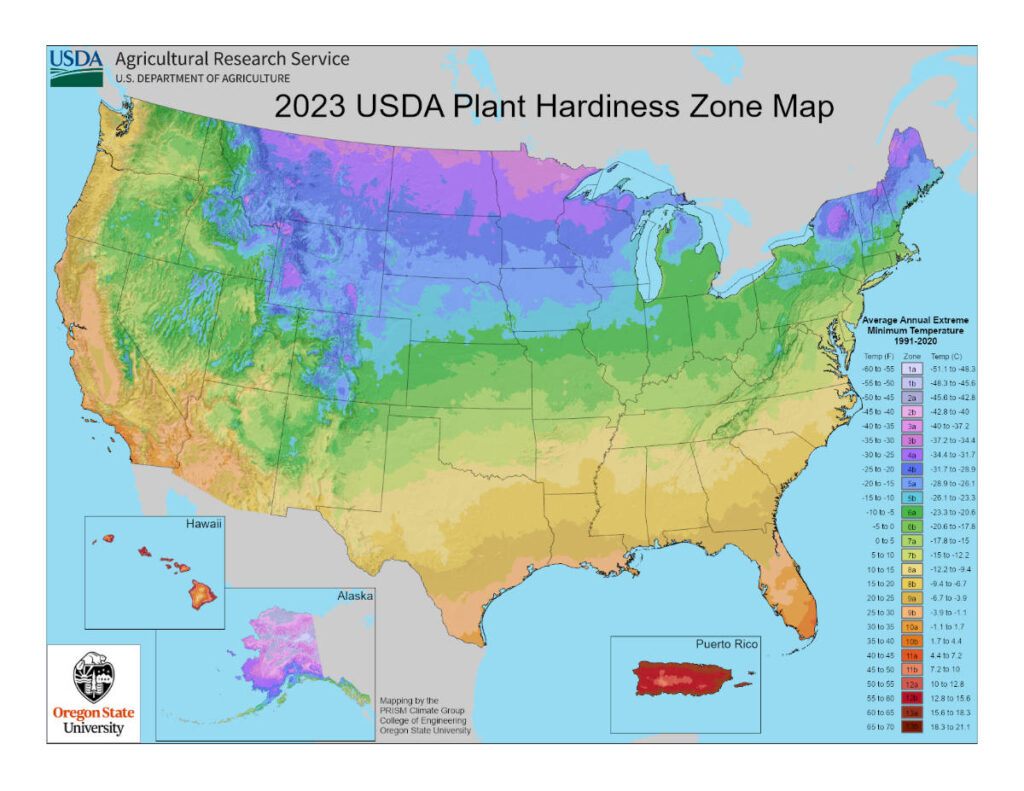Why do you have two? For example, if a plant is hardy from H5 to H9,
The USDA hardiness zones are a standard used to identify how well plants will withstand the cold temperatures of their local climates. The maximum USDA Hardiness Zone reflects the highest zone to which the plant is suited. Each zone is defined by the average annual minimum winter temperature, divided into 10-degree Fahrenheit increments. These zones help gardeners and growers determine which plants are most likely to thrive at a location.
When a plant is described as being hardy from zone 5 to zone 9 (H5 to H9), it means that the plant can survive the winter in areas where the minimum temperatures range from -20 to -10 degrees Fahrenheit (zone 5) up to 20 to 30 degrees Fahrenheit (zone 9). These numbers indicate the climatic conditions suitable for the plant’s survival and growth. Here’s why two zones are often specified:
- Lower Limit (Minimum Zone): This is the coldest zone where the plant can survive. It tells you the minimum cold temperature that the plant can typically withstand. For a plant hardy in zone 5, temperatures colder than -20 degrees Fahrenheit might kill it or cause significant damage.
- Upper Limit (Maximum USDA hardiness Zone): This reflects the highest zone to which the plant is suited, generally indicating tolerance to heat, humidity, and cold. For example, a plant listed up to zone 9 may struggle or fail to thrive in the warmer conditions of zone 10 or above, possibly due to factors such as excessive heat or inadequate winter chill periods needed for dormancy.
Thus, specifying a range (H5 to H9) provides a guideline on where the plant will perform best, considering its ability to endure both the cold of the lower zones and the heat of the upper zones.

More on USDA Hardiness Zones
